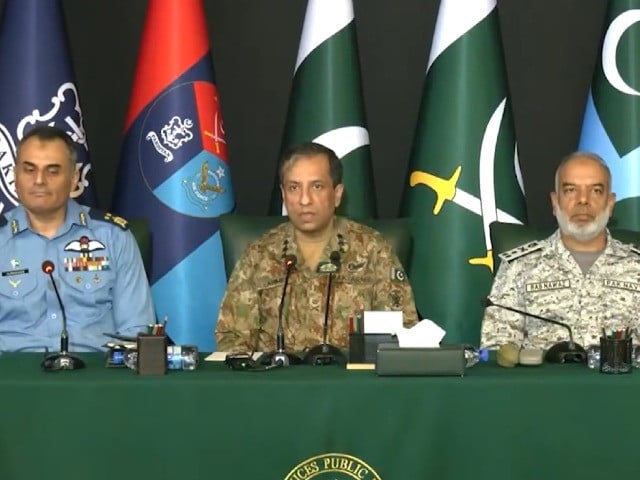Operation Bunyan-um-Marsoos: Pakistan’s Decisive Response to Indian Aggression
In a recent press conference, Lieutenant General Ahmed Sharif Chaudhry, Director-General of Inter-Services Public Relations (ISPR), emphasized Pakistan’s unwavering commitment to defending its sovereignty. He stated that any threat to the nation’s territorial integrity would be met with a comprehensive, retributive, and decisive response.
Operation Bunyan-um-Marsoos was launched as a countermeasure to Indian military provocations. The operation targeted 26 military sites, including air force and aviation bases in areas such as Suratgarh, Sirsa, Adampur, Bhuj, Nalia, Bathinda, Barnala, Harwara, Avantipura, Srinagar, Jammu, Mamoon, Ambala, Udhampur, and Pathankot. These facilities sustained significant damage.
Key installations like the BrahMos missile facilities, which had previously launched attacks resulting in civilian casualties in Pakistan, were neutralized. Additionally, the S-400 air defense systems at Adampur and Bhuj were effectively targeted by the Pakistan Air Force. Logistical support sites, including the field supply depot at Uri and the radar station at Poonch, were also dismantled.
Military command centers, notably the 10th and 80th Brigades at KG Top and Nowshera, were destroyed. Facilities harboring proxy elements responsible for terrorist activities within Pakistan were specifically identified and eliminated.
Across the Line of Control, Pakistani forces targeted military elements, including headquarters, logistic bases, artillery positions, and posts responsible for unprovoked attacks on civilians in Azad Jammu and Kashmir. These actions continued until the opposing forces signaled a desire for restraint.
The operation showcased the integrated capabilities of Pakistan’s tri-services, utilizing real-time situational awareness and network-centric warfare. Precision-guided long-range Fateh-series missiles (F-1 and F-2), advanced loitering munitions, and long-range artillery were employed to ensure accurate targeting.
In response to India’s use of drones to intimidate civilians, Pakistan deployed its own unmanned aerial vehicles over major Indian cities, including New Delhi, demonstrating its advanced drone capabilities. A total of 84 hostile drones were intercepted and destroyed by Pakistan’s air defense systems.
Pakistan also conducted cyber operations aimed at disrupting the Indian military’s critical infrastructure and communication networks, further hindering their operational capabilities.
Lieutenant General Chaudhry clarified that Pakistan’s military actions were carefully calibrated to avoid civilian casualties, focusing solely on military targets involved in aggression against Pakistan.
During the same period, Pakistan faced an uptick in terrorism in Khyber Pakhtunkhwa and Balochistan, attributed to Indian-sponsored proxies. Despite these challenges, Pakistan’s armed forces successfully conducted counter-terrorism operations on the western front without compromising their eastern defense.
The operation received overwhelming support from the Pakistani public, political leadership, and media. The unity and resilience displayed by the nation served as a force multiplier for the armed forces.
Air Vice Marshal Aurangzeb Ahmed highlighted the Pakistan Air Force’s role in the operation, noting that it targeted the highest number of Indian Air Force airfields in a single mission since 1971. The precision of these strikes ensured minimal collateral damage.
Vice Admiral Raja Rab Nawaz addressed concerns regarding the Indian aircraft carrier INS Vikrant, stating that it was closely monitored and deterred from approaching Pakistani waters. The Pakistan Navy remained vigilant, ensuring the security of the nation’s maritime borders and ports.
In conclusion, Operation Bunyan-um-Marsoos stands as a testament to Pakistan’s resolve to defend its sovereignty and respond decisively to any form of aggression, while maintaining a commitment to peace and regional stability.


